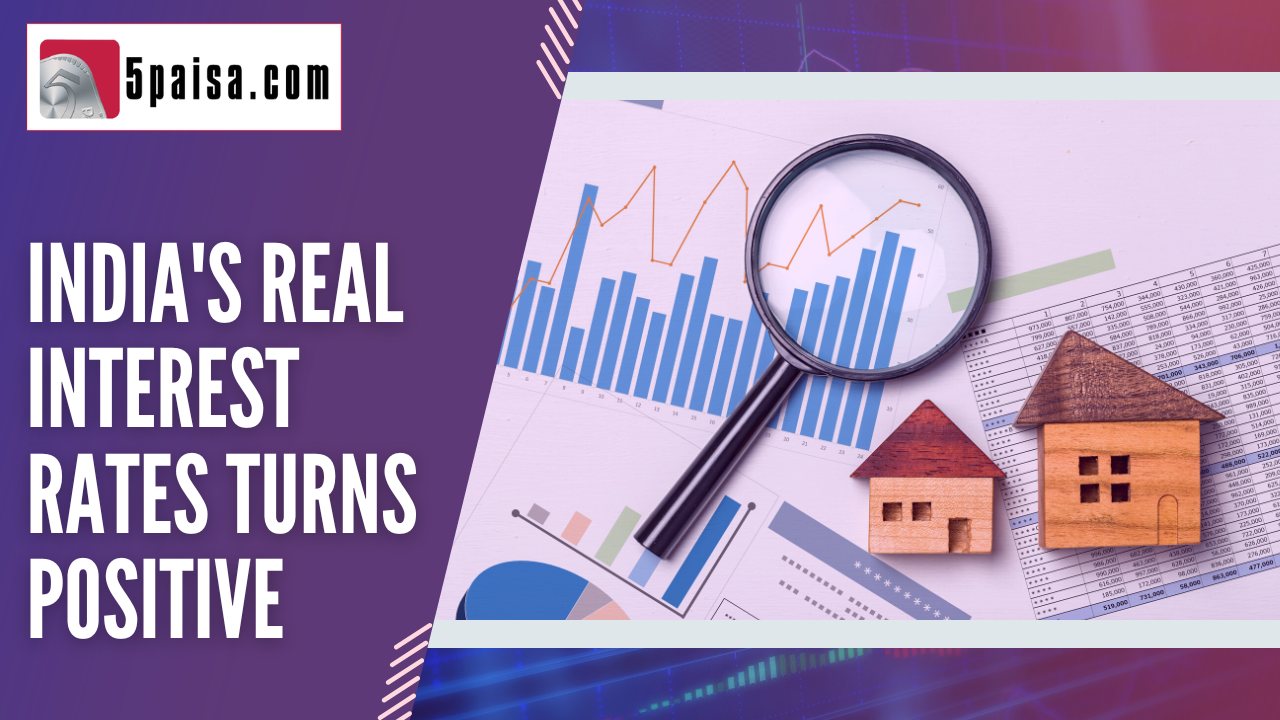Indian real interest rates are finally in the positive now


In the macroeconomic set of incomparable numbers, there are some variables that are eminently comparable. One such variable is the real rate of interest. Now the interest that we earn on a bond or a government security is the nominal interest. A part of the money you get is wiped out by inflation, depending on how high the level of inflation is. For instance, if the nominal rate of interest on a bond is 7% and the inflation is 4%, then the real rate of return is 3%. However, in the last one year, the rate of inflation had risen rapidly, but rates were still at the low post-COVID phase. That had resulted in negative real rates; which mean that in post inflation terms, investors were paying their money to invest in bonds.
After a long time, the Indian real rates of interest have turned positive. That means, the bond is earning more than the rate of inflation. How did that come about. In the last few months, the RBI has hiked the repo rates sharply by a full 225 basis points. The repo rates, which were at 4% till May 2022, have been hiked to 6.25% by December, including 3 successive rounds of 50 bps rate hike each. At the same time, the rate hikes led to lower inflation as the rate of inflation fell from a high of 7.79% to 5.88% for November 2022. This combination of higher interest rates and lower inflation resulted in India's real interest rate turning positive after a relatively long gap.
This is in contrast to the US where the real rates are still in the negative. For instance, the US 10 year bond yields stand at 3.50% while the US inflation is standing at 7.71%. That is a negative real rate of interest of -4.21%. One can argue that inflation is still falling, but things should get better as a few more rate hikes by the Fed narrow this gap further. On the other hand, in the Indian context, the 10 year yields are at 7.3% while the inflation rate is at 5.88% as per the latest reading. That implies a positive real rate of return in the Indian market at +1.42%. What are the implications of Indian real rates being much higher than in the US?
For one, it means that the risk of risk-off flows moving out of India and into the US are not valid any longer. Why would an investor want to move from a real rate of return of 1.42% and invest in an asset with a real rate of return of -4.21%. That means, the risk of outflows by FPIs from the Indian market are not a valid fear any longer. This should be a harbinger of more risk-on flows into India. One cannot forget that invest in the Indian markets is about investing in an economy that is growing at 7% per annum. That should be a big difference for investors in the ultimate analysis.
Share Market Today
| Indices Name | Price | Price Change (% change) |
|---|---|---|
| S&P ASX 200 | 7555.70 | -82.4 (-1.08%) |
| CAC 40 | 8022.41 | -0.85 (-0.01%) |
| DAX | 17737.36 | -100.04 (-0.56%) |
| Dow Jones | 37986.40 | 211.02 (0.56%) |
| FTSE 100 | 7895.22 | 12.39 (0.16%) |
| Hang Seng | 16224.15 | -161.73 (-0.99%) |
| US Tech Composite | 15287.01 | -319.49 (-2.05%) |
| Nikkei 225 | 37068.28 | -1011.35 (-2.66%) |
| S&P 500 | 4967.23 | -43.89 (-0.88%) |
| Gift Nifty | 22203.50 | 188.5 (0.86%) |
| Shanghai Composite | 3065.26 | -8.96 (-0.29%) |
| Taiwan Weighted | 19527.12 | -774.08 (-3.81%) |
| US 30 | 37973.70 | 209.7 (0.56%) |
Start Investing in 5 mins*
Rs. 20 Flat Per Order | 0% Brokerage
